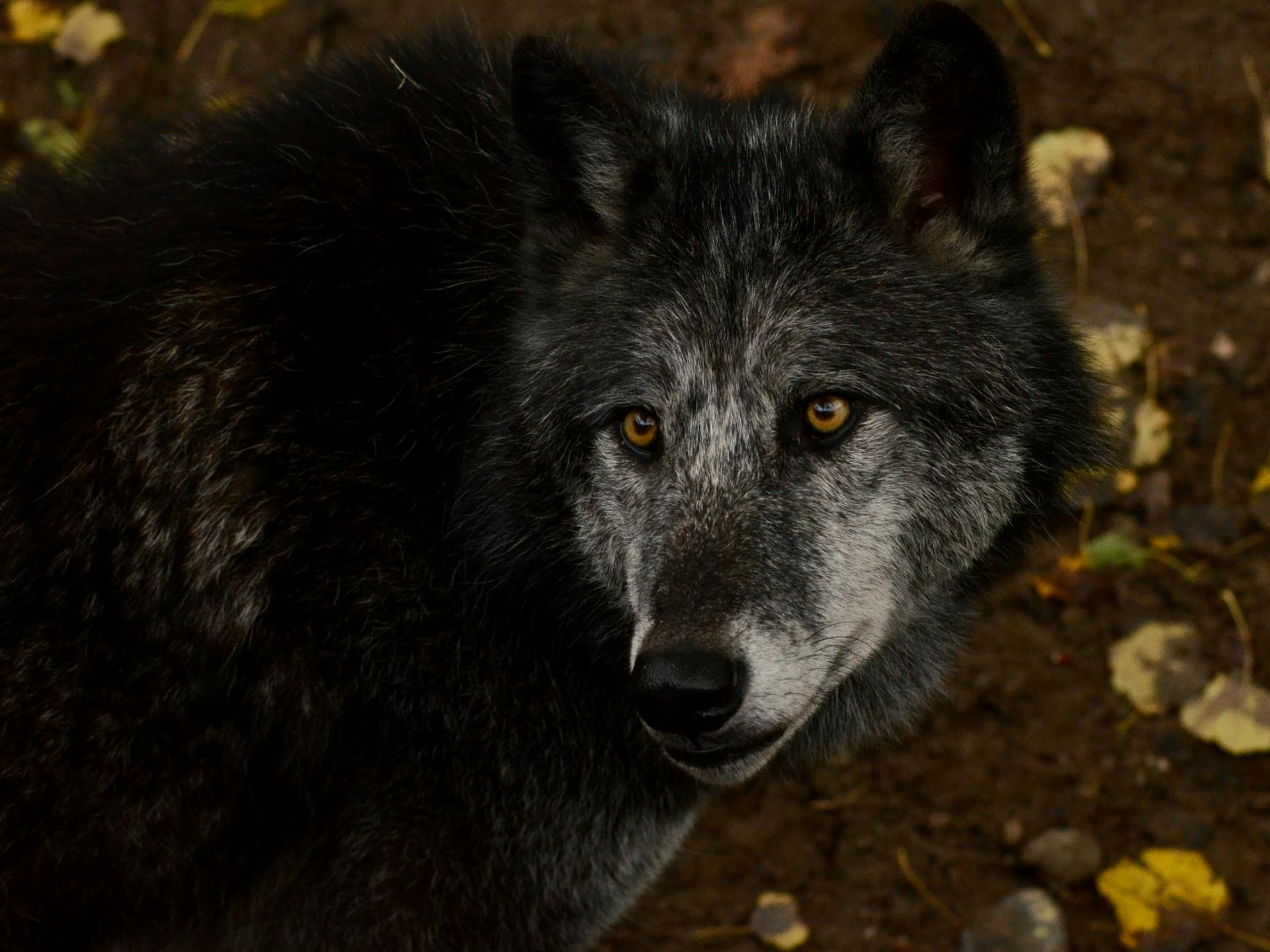
Grey wolf dog hybrids, also known as wolf hybrids, are a fascinating topic. They're often misunderstood, but with the right information, you can understand what they're all about.
Grey wolf dog hybrids are a cross between a domestic dog and a grey wolf, typically resulting in a large, powerful animal. Their physical characteristics can vary greatly depending on the parent breeds.
Grey wolf dog hybrids are often considered exotic pets, but they require specialized care and housing due to their wild ancestry. They need plenty of space to roam and exercise.
Their temperament can be unpredictable, making them a challenging pet to handle. They may exhibit behaviors that are difficult to manage, such as aggression and fear-based responses.
What is a Wolf Hybrid?
A wolf hybrid, also known as a wolfdog, is a term used to identify the offspring of a wolf and a domestic dog.
Wolf hybrids are not always hybrids, and the term wolfdog is often used to describe a domestic dog with relatively recent wolf ancestry.
For your interest: Breeds of Dogs That Look like Wolves
Dogs and wolves share an evolutionary past and display similar physical and behavioral traits, making them interfertile.
In other words, wolves can breed with dogs, and their offspring can produce offspring themselves, although hybridization is relatively rare in the wild due to territorial behavior.
Domestication is the process by which a wild animal adapts to living with humans, and dogs evolved from a common ancestor with the wolf through a centuries-long process of domestication.
Through domestication, a dog's behavior, life cycle, and physiology have become permanently altered from that of a wolf.
The genes expressed by dogs have been altered to varying degrees from their wild counterpart, making them more dependent on humans for their survival.
Wolves, on the other hand, exhibit relatively consistent behavior governed by their instincts, which have been studied and observed for many decades by researchers.
However, just like any wild animal, their behavior will always retain some unpredictability.
Many breeders who deal in wolf hybrids promote the "wolf content" of the pups, but this is not based on sound biology or genetics.
See what others are reading: Alaskan Malamute Wolves
When breeding a dog with a wolf, the offspring will inherit a 50/50 split of genes from each parent, but there is no way to calculate or manipulate which genes are passed to any individual offspring.
This means that any individual animal might inherit all the dog genes and be 50/50, or be predominantly wolf, or any variation or combination in between.
There are genetic tests available that look at 3-4 genetic markers, depending on whether it's a male or female, but these tests are not entirely reliable and can only determine if there has been wild wolf DNA in the domestic dog's lineage in the past three generations.
Owning a Wolf Hybrid
Owning a wolf hybrid can be a complex and challenging experience. Their wild nature and social needs can be overwhelming for owners who are not prepared.
These animals require a lot of attention and interaction, and their owners often underestimate the task of understanding their behavior and social needs. In many cases, wolf hybrids are kept in small cages or tied to chains, with a poor quality of life.
Thousands of pet wolves or hybrids are abandoned, rescued, or euthanized every year due to inadequate care and preparation.
Physical Development and Mental Growth
Physical development in wolf hybrids can be unpredictable, as they mature at different rates than wolves and dogs. They may reach sexual maturity anywhere from 1 to 4 years of age, which can trigger a shift in hormone quantity and balance.
This hormonal change can lead to behavioral changes, such as testing or challenging of packmates, which can be transferred to humans in captivity. This can cause the animal to be perceived as stubborn, bold, or even aggressive.
Domestic dogs, on the other hand, tend to mature much earlier, between 6 to 8 months of age. Hybrids can exhibit any combination of wolf or dog maturation rates and behavioral changes, making their development even more unpredictable.
The territorial instinct of wolves can be transferred to the owner's home, causing them to mark their territory by urinating or defecating in certain areas. A couch or corner of the room may take the place of a tree or rock, and the owner may need to take steps to prevent this behavior.
Hybrids may have any degree of territorial or testing behavior, ranging from one end of the spectrum to the other. This means that their physical and mental development can be highly variable, making it essential for owners to be prepared and flexible.
Owning a Wolfdog
Owning a Wolfdog is a significant commitment, as these animals have a strong social nature and demand a lot of attention and interaction. They are not solitary creatures and need to be part of a pack.
Wolves are social by nature, and their expectation for interaction translates onto the owner. This can be overwhelming for those who don't understand the needs of a wolf-dog hybrid.
Proper preparation is crucial before bringing a wolfdog into your life, as many owners end up abandoning or euthanizing these animals due to inadequate care. Every year, thousands of pet wolves or hybrids are abandoned or euthanized because people purchase an animal they were not prepared to care for.
If you're considering owning a wolfdog, research the behavior, health, and containment needs of these animals, as well as laws pertinent to their ownership. This will help you make an informed decision and prevent hardships for both humans and animals.
European Dog Breeds Block
European dog breeds are often confused with wolf hybrids due to their physical similarities, but they are actually quite distinct.
The genetic analysis of European dog breeds shows that they can be easily distinguished from wolf hybrids using genomewide SNP data.
In fact, a study of European wolves and European dog breeds found that the analysis framework didn't affect the ability to detect hybrids and back-crosses.
This means that even with varying populations of wolves, the genetic data can still be used to identify hybrids and back-crosses accurately.
The results from this study were in strong agreement with previous findings, demonstrating the effectiveness of genomewide SNP data in distinguishing between European dog breeds and wolf hybrids.
Common Myths and Facts
A wolf-dog hybrid's life expectancy is actually the same as a large domestic dog, typically ranging from 12 to 14 years in captivity.
They don't make good guard dogs either, as their shy nature can lead to unpredictable behavior and fear-induced aggression.
You might think that wolf-dog hybrids are more resistant to diseases, but the truth is that they're just as prone to common canine illnesses as regular dogs.
Huskies and Malamutes are not part wolf, but rather breeds of dogs like any other.
Wolf Content and Genetics
The Eurasian wolf population has a significant amount of dog ancestry, with some chromosomes showing higher proportions of dog ancestry than others.
Detecting hybridization between grey wolves and domestic dogs is challenging due to their recent shared common ancestry and the difficulty in identifying nonadmixed individuals.
Genome-wide SNP data has improved the resolution to detect admixture between canid species, but it's still a complex task.
First-generation wolf-dog hybrids can be detected using ancestry block analyses, and recent back-crosses can also be identified.
The frequency of dog-derived alleles in wolves is three times higher than the frequency of wolf-derived alleles in pure-breed dogs.
This suggests that there has been more introgression of dog alleles into the wolf gene pool than in the opposite direction.
The estimated levels of wolf alleles introgression to free-ranging dog populations are likely to be higher.
In some Eurasian wolf populations, two autosomes had significantly lower proportions of dog ancestry compared to the mean for all other autosomal chromosomes and the X chromosome.
The X chromosome did not show any significant difference in dog ancestry proportions compared to autosomal chromosomes.
Using Bayesian clustering methods, dogs can be distinguished from wild canids, and at higher K values, wolves and coyotes can be identified as distinct groups.
Legislation and Regulations
Legislation and regulations surrounding grey wolf dog hybrids vary widely. Laws differ by region, and even within the US, regulations vary at the state and federal levels.
In the US, federal law classifies wolf-dog hybrids as domestic animals, but states have their own regulations, with some classifying them as wild animals and requiring permits and special caging. Other states regulate them as dogs, requiring only vaccinations and licenses.
Rabies vaccinations for hybrids are complicated, as there's no vaccine developed and approved for use in wolves or wolfdogs. Some vets won't treat hybrids for liability reasons, while others require owners to sign a waiver acknowledging the vaccine is being used "off label."
Ownership Law
Laws vary by region, and in the US, it varies at the government level. For example, at the federal level, US Code 9 CFR Section 1.1 states that the cross between a wild animal species and a domestic animal, such as the wolf and the dog, is a domestic animal.
You might like: Closest Domestic Dog to a Wolf
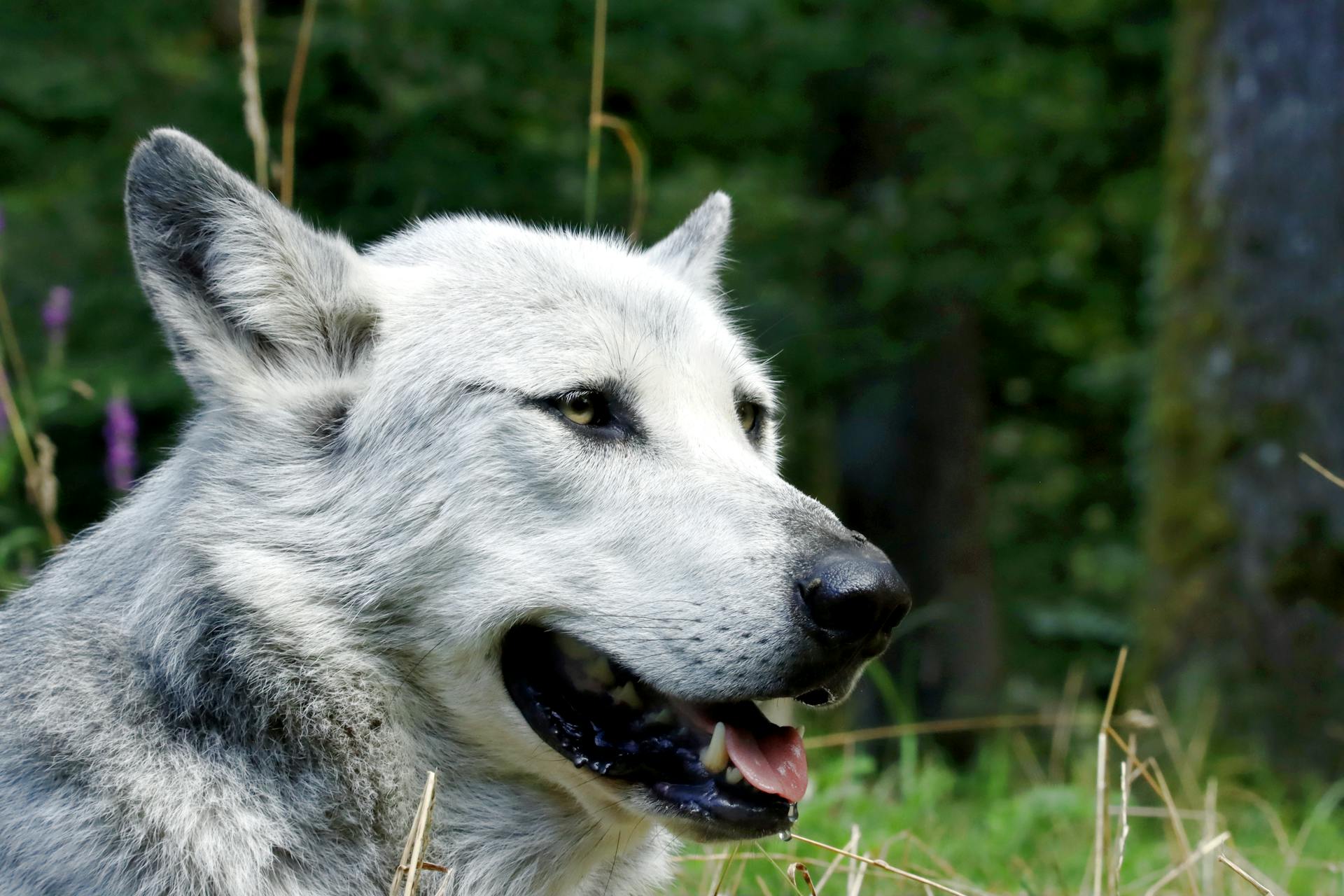
Some states classify hybrids as wild animals and require owners to possess permits and caging similar to those required for a wolf. In other states, hybrids are regulated as dogs, needing only proper vaccinations and licenses.
In some states, it is illegal to own a wolf-dog hybrid, while others leave it up to counties and cities to set their own regulations around hybrids. This means owners must stay informed about the laws in their area.
Rabies vaccinations in hybrids are complicated because there has been no vaccine developed and approved for use in wolves or wolfdogs.
Block in NA
In North America, wolves show limited signs of dog admixture, with most individuals having less than 0.6% of SNP alleles of dog ancestry.
The majority of North American wolves analyzed were found to have very little dog ancestry, making it clear that they are a distinct population.
Mexican wolves, however, stood out as having a higher level of dog ancestry, ranging from 0.7 to 5.1%.
An individual from Vancouver Island, British Columbia, had an unusually high 21% of SNP alleles of dog ancestry and 16 chromosomes showing signs of admixture.
This is a stark contrast to the wolves from North Canada, where two black individuals had no detectable signs of dog ancestry.
Data and Research
The data on grey wolf dog hybrids is fascinating. They are often referred to as wolfdogs or wolf hybrids.
Research suggests that wolfdogs can exhibit a range of behaviors, from being highly energetic and playful to being more sedate and calm. Their temperament can vary depending on their individual characteristics and upbringing.
Studies have shown that wolfdogs can thrive in a variety of living situations, including apartments and homes with small yards, as long as they receive adequate exercise and mental stimulation.
Consider reading: Minnesota Wolfdogs
Wolf–Hybridisation in Eurasia
In Eurasia, wolf-hybridisation is a significant phenomenon that can be detected through genomewide SNP data.
Analysis of European wolves and dog breeds of European origin shows strong agreement with previous results, demonstrating the effectiveness of the framework used.
The joint analysis of different wolf populations does not affect the ability to detect hybrids and back-crosses.
A data set limited to European wolves and European dog breeds of European origin only was used, and the results were in strong agreement with previous findings.
This suggests that the framework of the analysis is robust and can be applied to different populations without compromising the accuracy of the results.
The results from this analysis can be found in Supporting Information Part B, Table S4.
A different take: Strongest Dog Names
European Breeds Data Set
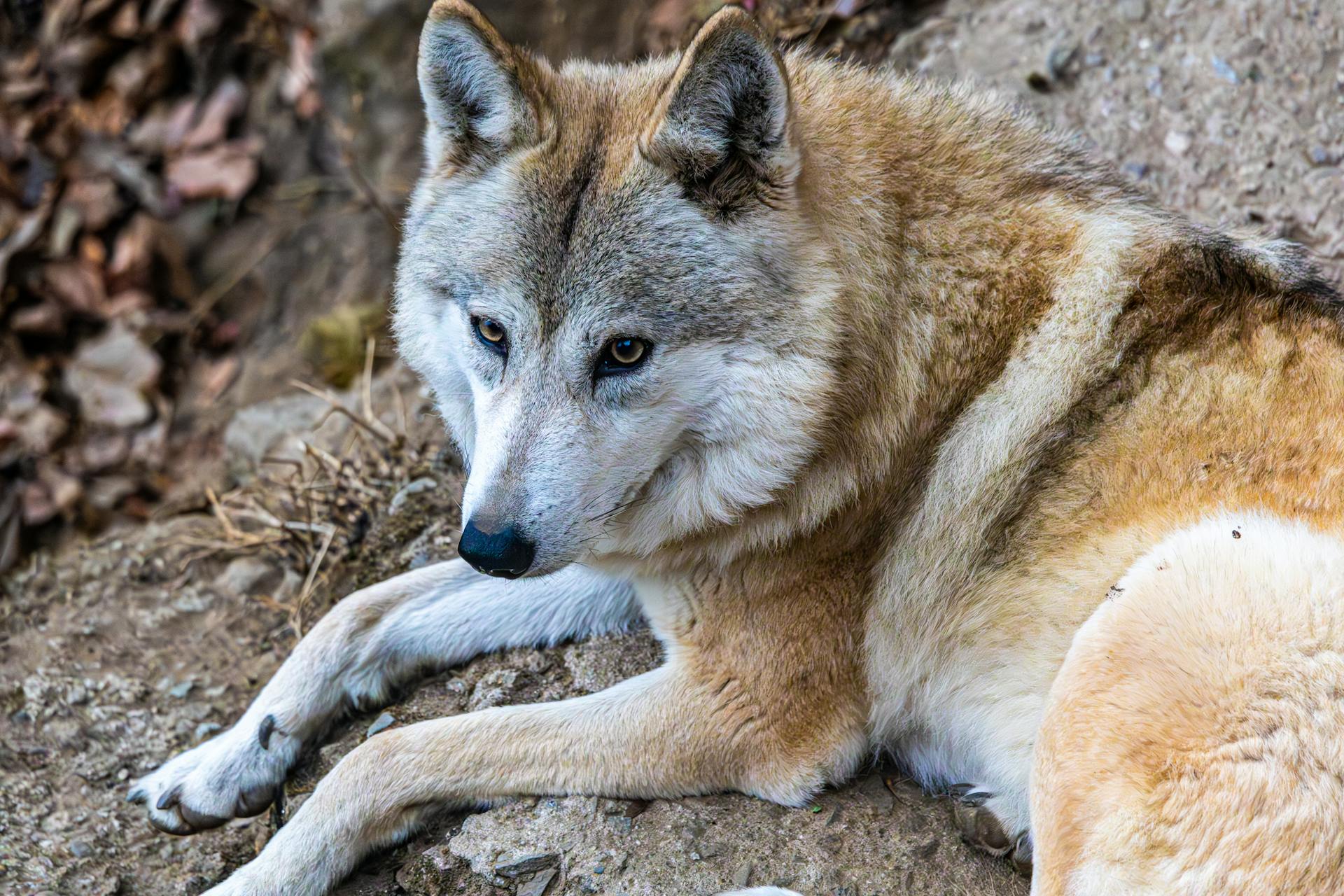
The European Breeds Data Set was used to assess the consistency of admixed individual identification.
This data set consisted of European wolves and European dog breeds.
The analysis was carried out to evaluate whether the applied methods provide consistent results regardless of the composition of the included wolf and dog data sets.
Details of the analysis can be found in the Supporting Information, Part B.
Recommended read: European Wolfdog
Identification of Admixed Individuals Using Bayesian Methods
Bayesian clustering methods were used to identify admixed individuals, and results were highly consistent for K values between 2 and 4.
At K = 2, dogs were distinguished from wild canids. At K = 3, dogs, wolves, and coyotes were identified as distinct groups. Italian wolves were identified as the fourth group at K = 4.
The highest delta K value was for K = 2 in the structure analysis, and the second highest was for K = 3. The lowest cross-validation error was obtained for K = 6 in the admixture analysis.
Broaden your view: Dog Names for 2 Dogs
At K = 6, the genetic clusters identified included coyotes, two groups of dogs, and clusters of Italian wolves, other European wolves, and Saudi Arabian wolves. Other Asian wolves had intermediate assignment values between the European and the Saudi Arabian clusters.
Two canids from European populations had assignment probabilities to the wolf population outside the range for other European wolves, but within the range for F2/F3 back-crosses. Two other individuals from Eastern Europe had ambiguous admixture status, with assignment probabilities to the wolf population of about 90%.
Asian wolves had higher assignment probabilities to the dog cluster compared to European wolves, ranging from 11 to 13% in Arabian Peninsula wolves. Four canids from the Arabian Peninsula had assignment probabilities to the dog cluster of 15-21%.
Assessment of Heterogeneity of Proportions Across Chromosomes
In recently admixed populations, differences in ancestry proportions may arise among chromosomes as a result of nonrandom mating and selection.
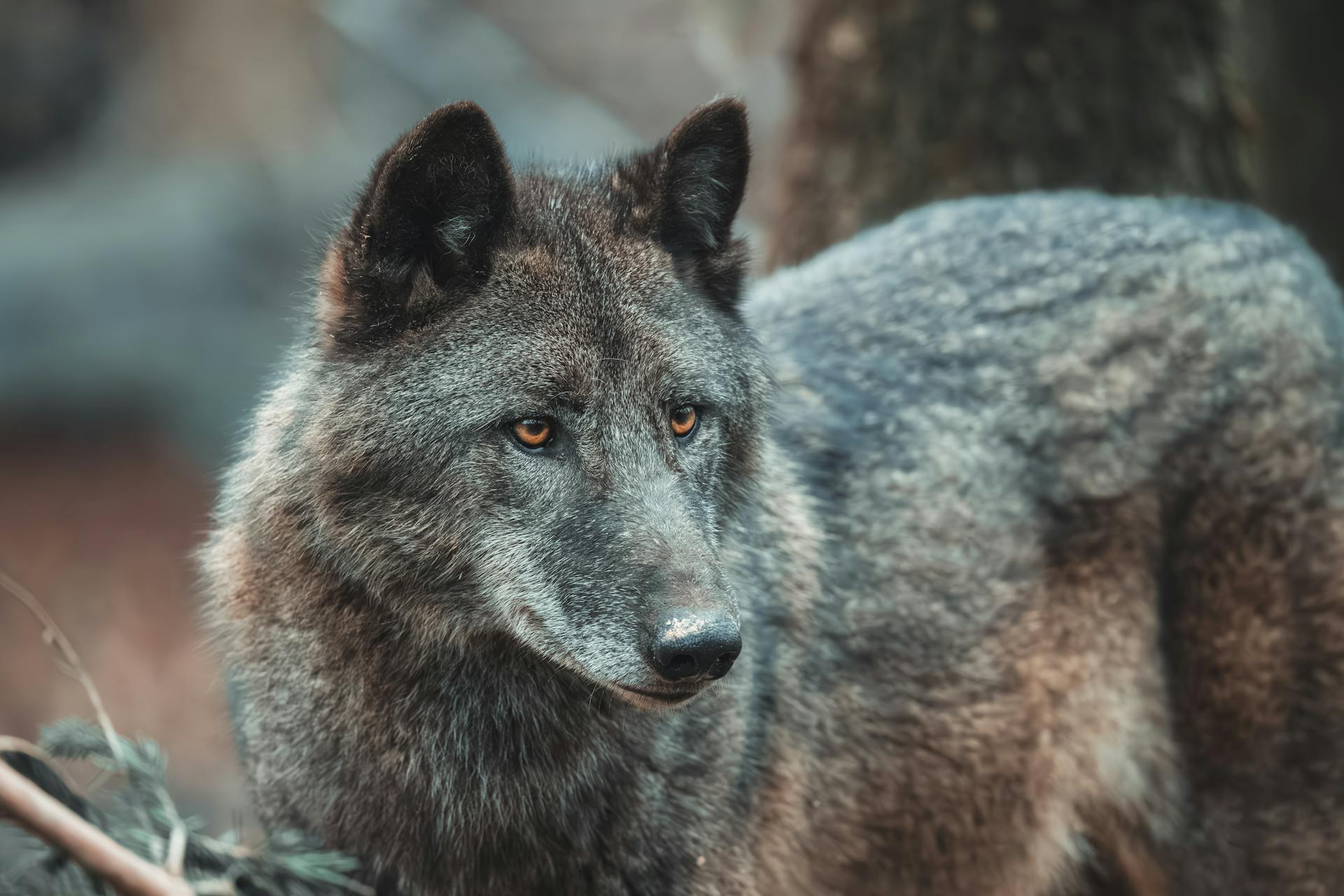
The Chromosomal Ancestry Differences (CAnD) test was applied to assess whether there are significant differences in dog ancestry contributions among the chromosomes in Eurasian wolves.
No significant heterogeneity in dog ancestry proportions was detected across all autosomal chromosomes in the data set of all wolves studied, with a p-value of 0.072.
However, when including both autosomal and X chromosome data for males and females, two autosomes had significantly lower proportions of dog ancestry compared to the mean for all other autosomal chromosomes and the X chromosome.
Interestingly, no significant difference in dog ancestry proportions was found in the X chromosome compared to the mean ancestry in autosomal chromosomes in any of the data sets.
The results suggest that while there may be some variation in dog ancestry proportions among chromosomes, it is not significant enough to be detected in all data sets.
Readers also liked: Best Dog Food for Dogs with No Teeth
Software and Methods
When breeding a grey wolf dog hybrid, it's essential to consider the software and methods used to ensure the best possible outcome.
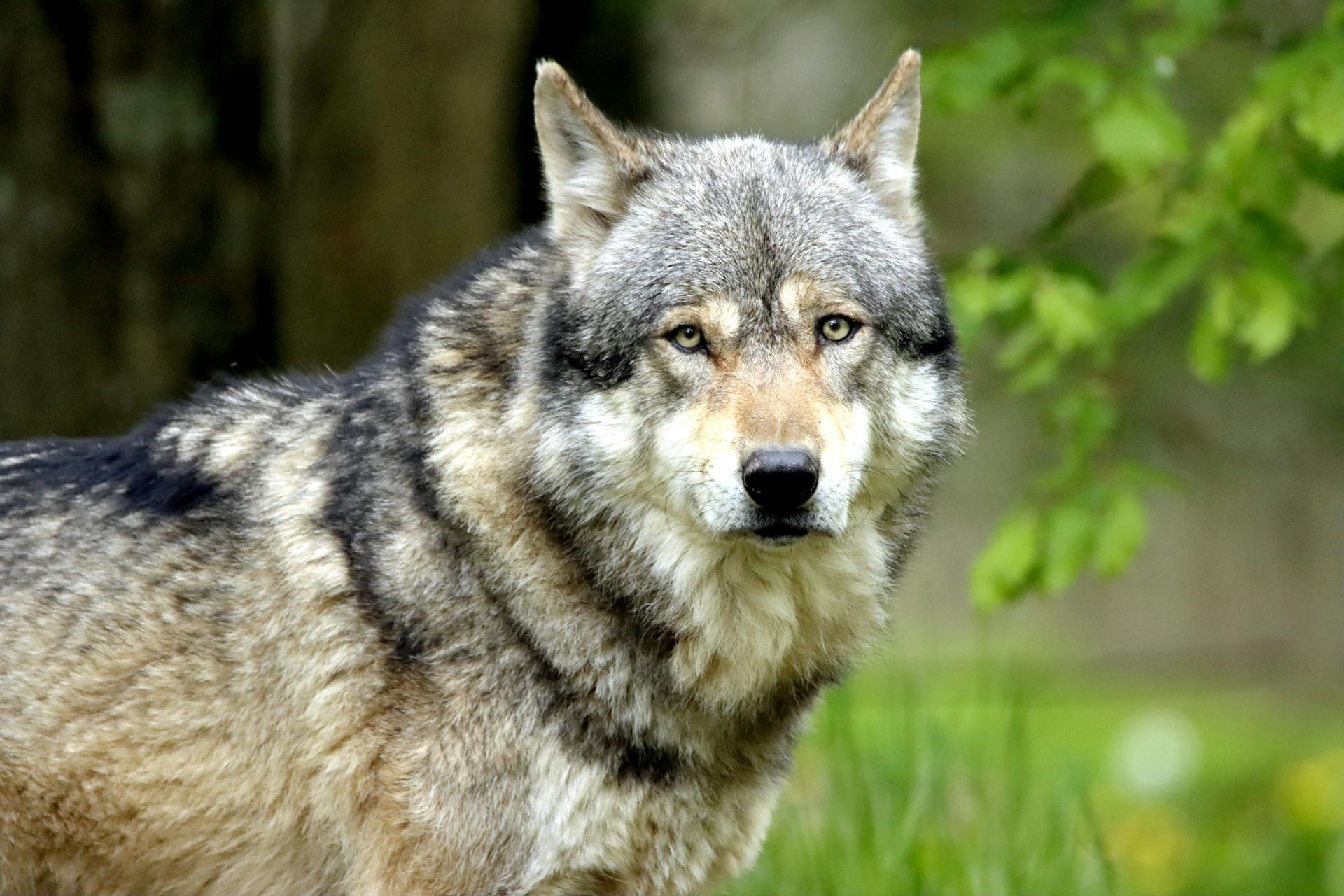
The use of artificial insemination is a common method in breeding programs, and it allows for greater control over the breeding process.
Some breeders also use genetic testing to identify potential health issues in the offspring, such as degenerative myelopathy.
Genetic testing can help breeders make informed decisions about which dogs to breed together, reducing the risk of passing on inherited disorders.
By using these advanced methods, breeders can produce healthy, well-structured hybrids that meet their desired breed standards.
For your interest: Half Wolf Half Husky Breed
Block in Using PCadmix Software
PCadmix software is a powerful tool for ancestry block analysis, and it's particularly useful when you need to determine local ancestry along each chromosome for phased SNP genotype data. It uses an algorithm based on Principal Component Analysis to get the job done.
One thing to keep in mind is that PCadmix requires prior information regarding allele frequencies in nonadmixed populations, so you'll need to have that information on hand. This can be a bit of a challenge, but it's worth it for the accuracy you'll get.
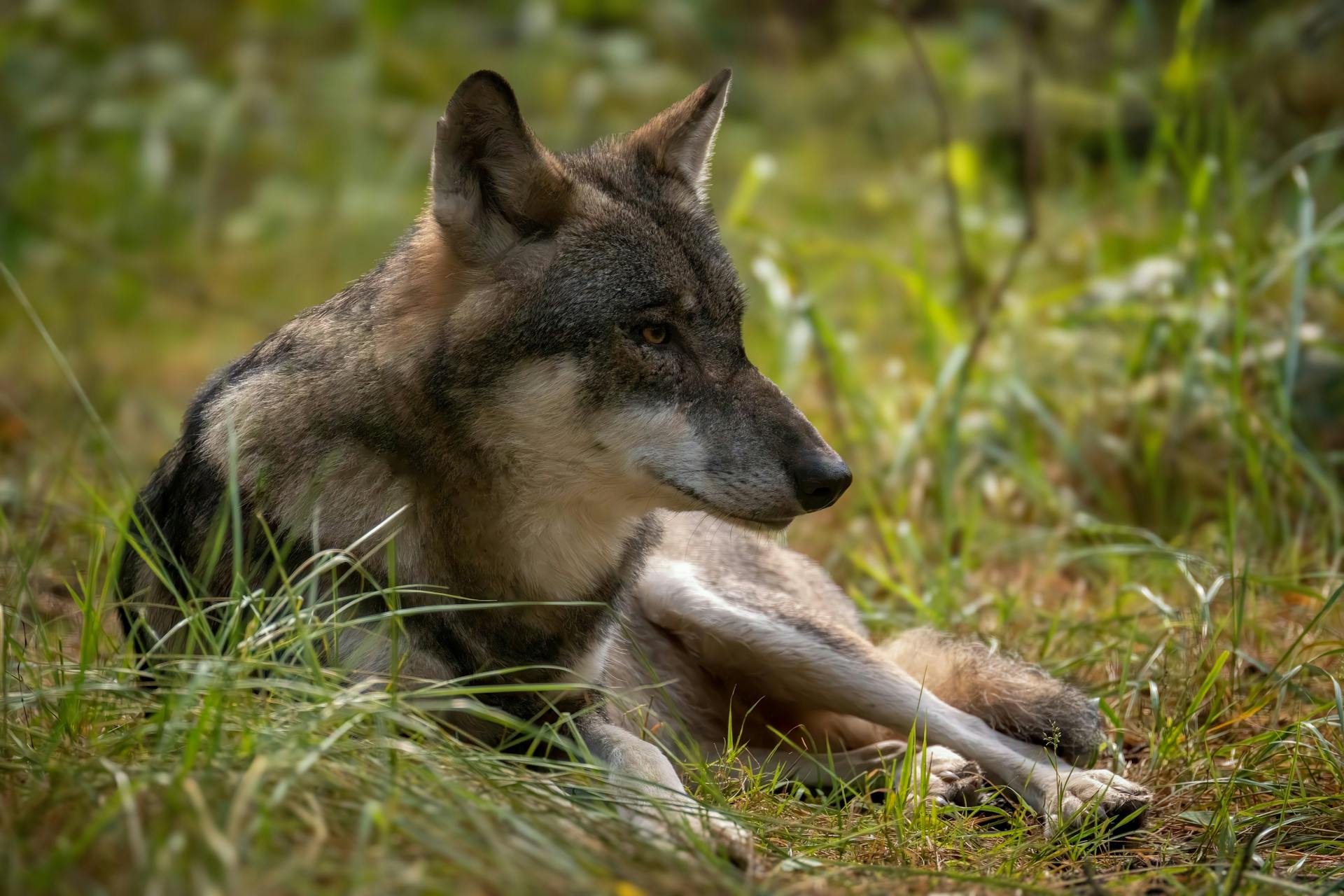
PCadmix has been shown to have better accuracy than the lamp analysis using a supervised ancestry assignment mode, which is a big plus. It's also able to accommodate nonindependent markers, which means you can use more relaxed criteria for LD pruning.
To get started with PCadmix, you'll need to phase your genotypes using a tool like fastPHASE. This will give you the phased SNP genotype data you need to run PCadmix. The wolf and dog genotypes were phased together in the study, with population information provided in an input file.
The study used a set of nonadmixed individuals from ancestral populations to compare the accuracy of PCadmix with lamp. For wolves, the criteria for individuals to be included in the nonadmixed set were an average proportion of autosomal SNP alleles of dog ancestry lower than 0.005, and no more than one chromosome having over 10% of SNP alleles of dog ancestry.
Block Lamp Software Usage
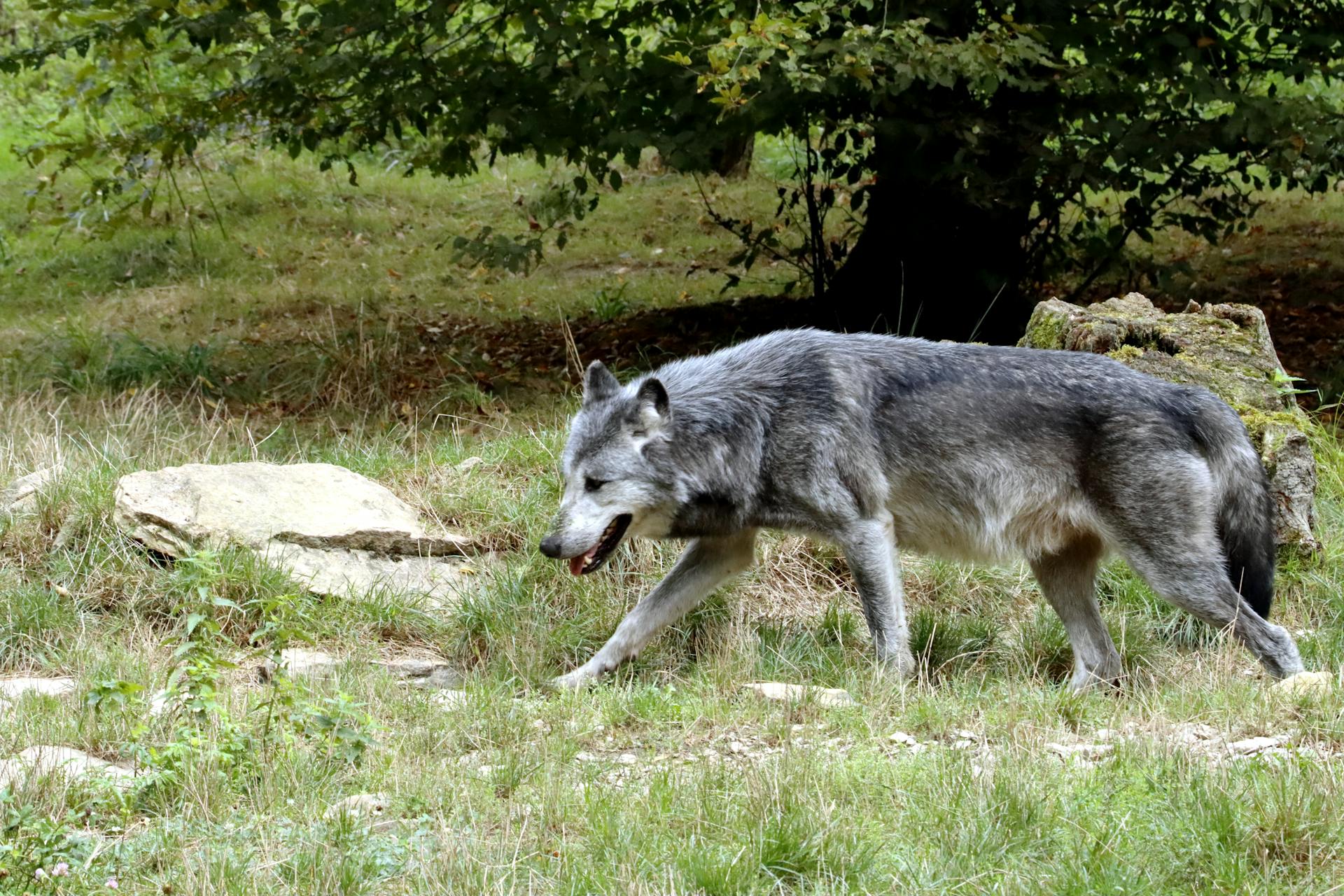
Lamp software is used to carry out ancestry block analysis, which infers blocks of wolf and dog ancestry along chromosomes in each individual.
This analysis is used to assess the admixture status of putative wolf-dog hybrids, identify additional admixed individuals, and assess the signatures of past admixture between wolves and dogs.
Lamp's unique feature is that it allows ancestry blocks estimation without defining a priori ancestral populations, making it a useful tool when the ancestral populations are unknown.
The software was used to analyze a data set consisting of wolves, putative hybrids, and pure-breed dogs, with a mixture proportion of 0.50:0.50.
All SNPs (61K) were included in the initial data set, which was subsequently pruned for loci that were monomorphic for the analyzed set of individuals, and for r > 0.1.
A recombination rate of 5e−10 and a fraction of overlap between adjacent windows (offset) of 0.2 were used in the analysis.
The assumption of recent admixture (10 generations since admixture) was made to increase the power to detect F1 hybrids and recent back-crosses.
This assumption was based on the fact that using 100 generations as admixture resulted in all individuals (wolves and dogs) being admixed.
Advantages and Limitations
The data set used in this study had its advantages and limitations. We used pure-bred dogs to compare with the wolf population, ensuring that we controlled for accuracy by limiting wolf admixture.
The use of pure-bred dogs allowed us to compare two populations with known admixture levels, which is not possible with free-ranging dogs. This comparison would have resulted in uncertain results.
Free-ranging dogs, however, are the source of the introgression of dog alleles into the wolf gene pool. Eurasian free-ranging dogs are a genetically distinct population, not an admixture of breeds.
Our data set includes putative hybrids that were deliberately selected for genotyping, allowing us to assess the accuracy of hybrid detection in previous studies. This also provided a sufficient number of admixed individuals to make conclusions regarding the mechanisms of admixture.
However, our data set cannot be used to assess the frequency of hybrids and recent back-crosses in the wolf populations studied. A different sampling design is required for this purpose.
The Italian wolf population has a relatively large sample size, which could potentially affect the results of population structure analyses.
Frequently Asked Questions
Are hybrid wolf dogs safe?
Hybrid wolf dogs can be unpredictable and challenging to control due to their potential fear-induced aggression. Their safety as pets depends on various factors, including their individual temperament and upbringing
How big can a wolfdog get?
Wolfdogs typically weigh between 70 to 100 pounds, with larger individuals being rare and exceptional. Most wolfdogs will not exceed 100 pounds, but some may reach up to 140 pounds in exceptional cases
Sources
- https://wolf.org/wolf-info/basic-wolf-info/wolves-and-humans/wolf-dog-hybrids/
- https://www.cattales.org/animals/wolfdogs/
- https://texaswolfdogproject.org/resources/owning-a-wolfdog
- https://www.youraudiotour.com/tours/welcome-to-cat-tales-wildlife-center/stops/14202
- https://www.ncbi.nlm.nih.gov/pmc/articles/PMC5978975/
Featured Images: pexels.com


